Where Has Bollywood’s Romance Gone?
In these divisive times, love remains a mere blip — not the central character it once was — in most Hindi films.
March 1, 2022
GIFT STORY FOR FREE
(YRF)
A woman, set to marry the brutish man her father has chosen, runs across mustard fields as she hears the melody that announces the arrival of her mandolin-playing lover. In bustling Mumbai, two lonely people find friendship and love by exchanging daily notes through a mislaid lunchbox. Former lovers begin an affair after marrying other people. Two crafty, spirited business partners of a wedding planning company muddy their relationship by having a one-night stand. A poet disillusioned with greed and hypocrisy finds love in the arms of a prostitute with a heart of gold. And a man who barely says a word falls in love with a woman who refuses to shut up, and learns how to live a life of joy.
Love has given Hindi cinema some of its most indelible moments. It is the force that unites two people separated by social divisions and circumstance, and colors scenes with sentiment and music, pushing audiences to cheers and tears. Chalk it up to the country’s historical penchant for love — in mythology, folklore, and popular narratives — or to a societal obligation to conjugal love. Romance has been the cornerstone of Hindi cinema since its inception. And yet, strangely enough, over the last couple of years, love has become a mere blip in Hindi cinema.
Shah Rukh Khan and Kajol in Kabhi Khushi Kabhie Gham (2001)
It’s particularly glaring when the best Hindi film love stories: the blockbuster Dilwale Dulhania Le Jayenge (1995), the funky Band Baaja Baaraat (2010), the ebullient Jab We Met (2007), the aesthetic Kabhi Kabhie (1976), the inimitable Rangeela (1995) — my favorite Hindi film of all time, to name a few — are from the not-so-distant past. Indeed, it feels impossible to name a Hindi movie from the last five years whose romance will endure for the ages as the movies above have. The biggest hits of this decade like Dangal (2016), Sooryavanshi (2021), War (2019), Padmaavat (2018), and Baahubali (2015) are more about machismo or laced with nationalist sentiment. Love in them, if present, is relegated to a character framing device. Perhaps, then, in these political times, rife with divisiveness, when the Hindi film turns to action thrillers and patriotic dramas, romance, if not dead, is on an extended break.
Romance is a key narrative device in Hindi cinema. It has made possible the endurance of Hindi film music, and is one of the few plot devices that isolates the self from family, society, and — within the structure of Hindi film — the rest of the cast. For an audience starved of public courtship, which often takes place in India in secret, clandestine romance on screen signals abandon and freedom. Rife with clichés, sure, but Hindi film romance suggests a fantastical escape from the traditional bindings of Indian society, even going so far as placing the love that crosses barriers of class, religion, caste, and circumstance as a love of substance. Though romance in Hindi film requires some social sanctioning — approval from family and society being the most common markers — Hindi films have reveled in showcasing love, first and foremost, as the private meeting of two individuals, outside the glare of familial structures.
Shree 420
But this phenomenon doesn’t mean romance is devoid of cultural and political context. In fact, standout romantic films across Hindi cinema treat love as a product of their times. In the decades following the independence of India in 1947, cinema presented love as an antidote in a corruptible society that cared more about class. In Awaara (1951), love can reform a trained thief. In Pyaasa (1957), a poet who has all but forsaken the world finds hope in the arms of a prostitute. In Sangam (1964), love expects to be free of the vices of jealousy and rage. Raj Kapoor, the star and director behind several essential social dramas, particularly gravitated toward making love stories. His stories defied the diktat of class and faith in Bobby (1973), corporate greed in Ram Teri Ganga Maili (1985), and beauty and superficial attraction in Satyam Shivam Sundaram (1978).
While social dramas treated love as the one virtuous offering in a world simmering with immorality and prejudice, filmmaker Yash Chopra’s cinematic ballads to romance suggested that love that does not lead to the formation of the family — the emotional core of middle-class Indian society — needed to be sacrificed. Both in Kabhi Kabhie (1975), where a father marries off his daughter, who is in love with a poet, to another man, and Silsila (1981), where two former lovers strike up an extramarital relationship, the love that drives the narrative does not end in marriage. In both films, the “hero” and “heroine” are married to someone else, and resign themselves to that obligation. Even in his movies that aim to subvert social expectations, love culminates in marriage; consider Lamhe (1991), a radical love story in which a man falls in love with a woman who is the spitting image of her mother, the woman he once loved. Often considered a movie far ahead of its time, the romance did not sway too far from a traditional route that culminates in a marital reunion.
Raj, Simran, and Bauji in "DDLJ". (YRF)
The 1990s borrowed from the Yash Chopra filmography and its adherence to family, but explored how Indians could embrace modernity and still be “good” Indians. Dilwale Dulhania Le Jayenge (1995), arguably the greatest romantic Hindi film of all time, centered British Indian Raj and Simran, who fall in love while traveling with friends across Europe. Simran’s father, however, has already promised Simran to the son of her father’s best friend in Punjab. To win Simran, Raj must leave the familiar, freer expanse of London and ingratiate himself to the traditions of Punjab, earn the favor of Simran’s family, and — most importantly — get the seal of approval from Simran’s father, the patriarchal center of decision-making.
For a young audience coming of age in the 1990s, with better connectivity to global pop culture and its freedoms, Dilwale Dulhania Le Jayenge provided a more realistic assurance that the agency in choosing one’s partner did not have to come at the cost of family, so long as such a partner could prove themselves worthy. Shah Rukh Khan, as Raj, played both the breaker of social etiquette and the charming son-in-law, becoming the undisputable star of romance. Khan had the uncanny ability to suffuse romantic moments with palpable sexual tension — partly driven by his refusal to kiss onscreen for many years, choosing instead to land a lingering peck on the neck. He broke this self-prescribed rule by kissing in Yash Chopra’s Jab Tak Hai Jaan (2012) only years later, easily his most tepid romance.
Madhuri Dixit and Salman Khan in Hum Aapke Hain Koun..! (1994)
Khan, and his fellow superstars of the 1990s, Salman Khan and Aamir Khan, successfully played soft, vulnerable everymen known as “chocolate boys” on screen, far from the hyper-virile action-star personas of Akshay Kumar and Ajay Devgn. In Hum Aapke Hain Koun..! (1994), Salman Khan plays Prem (“love”), an onscreen name he would go to claim in other films, a lovable, younger son of an upper-middle-class Indian family. Prem and Nisha, the sister of Prem’s sister-in-law, fall in love but theirs is the kind of love that blooms amid family events and celebratory functions. It has none of the eyebrow-raising clandestine meet-cutes that happen when a boy and girl are isolated from their families. But when Nisha’s elder sister suddenly dies, Prem and Nisha gallantly offer to sacrifice their love at the altar of family so that Nisha can marry her brother-in-law and serve as a mother to her sister’s newborn child. Aamir Khan, too, fulfilled this romantic role. In Jo Jeeta Wohi Sikandar (1992), he croons “Pehla Nasha” as he pretends to be wealthy to date a rich girl, only to discover that his friend had actually loved him all along. He resolves to be less superficial for his brother, to reunite with his family after being kicked out of the house.
The 1990s love that eventually surrendered to marriage and family helped cement the Khans as superstars who could be romantic ideals and family men, but it also led to the virginification of the Hindi film heroine. If love had to culminate in marriage, then the woman had to be marriage-worthy. In Dil To Pagal Hai (1997), Shah Rukh Khan plays Rahul, who falls in love with the traditional Pooja (Madhuri Dixit), someone he could marry, rather than the more “modern” Nisha (Karisma Kapoor). The hip Kuch Kuch Hota Hai (1998) depicted Khan as a widower who falls in love with his college best friend, only when she is no longer the short hair-wielding tomboy that she was in her youth but a maternal figure that can be part of a traditional Indian family. Even the great family saga, Kabhi Khushi Kabhie Gham (2001), sees an older son (Khan again) leave because his parents do not deem his choice of wife to be suitable for the family. These films proved particularly successful for the diaspora, who had the social freedom to pursue romantic relationships yet wanted to remain connected to the family — their umbilical cord to national and cultural identity. As Rachel Dwyer writes, “The Hindi film of the 1990s marked the dominance of the musical romance: a heightened form of glamour and consumption, where ‘Indian values’ were tested across the transnational Indian family.”
Shah Rukh Khan falls in love with Kajol after her physical transformation. (Kuch Kuch Hota Hai)
Yet, in the new millennium, Hindi film romance refocused on the self. Consider Imtiaz Ali movies like Socha Na Tha (2005) or Love Aaj Kal (2009), where the obstacle is not family or class, caste, and religion, but the unsure protagonists. In Love Aaj Kal, the hero and heroine amicably break up, as they realize their ambitions are pulling them to opposite corners of the world. Even in Ali’s standout romcom, Jab We Met (2008), the issue isn’t family, but timing; when boy and girl meet, the girl is in love with someone else. In other modern romcoms like Band Baaja Baaraat (2010) and Salaam Namaste (2005), both produced by Yash Chopra’s production house, commitment was the greater obstacle to romantic union; no one was waiting around for permission from their family.
This exploration of self easily lent itself to the content-driven films of this past decade, which promote societal PSAs. Here, the protagonists have to overcome obstacles like homophobia in Ek Ladki Ko Dekha Toh Aisa Laga (2019) and Shubh Mangal Zyaada Saavdhaan (2020), erectile dysfunction in Shubh Mangal Savdhan (2017) and virility in Vicky Donor (2012), love between a cis-man and trans woman in Chandigarh Kare Aashiqui (2021), and lavender marriage — as the wedding of convenience between closeted queer men and women is called — in Badhaai Do (2022). But these movies aren’t so much about love or romance as they are about resolving societal prejudice.
A still from Shubh Mangal Zyada Saavdhan (2020)
If movies dedicated to social issues reduce romance to a plot device, then the nationalist movies of recent years have no space for the romantic hero that the Khans popularized. Consider the “heroes” of the top-grossing films from the last few years: Dangal (2016), in which a father makes wrestlers out of his daughters so he can fulfill his dream of earning a gold medal for India; Kesari (2019), about a Sikh soldier who leads a battalion against feral Afghani tribesmen; or Sooryavanshi (2021), about an anti-terrorism squad that must nab terrorists before they destroy India. These neither have openly vulnerable heroes like the Khans; indeed, all their love and commitment is for the country. Even the men who’ve dominated India’s emerging online streaming space — whether the characters prone to violence and cussing in Mirzapur (2018) or those in the criminal underbelly of Bombay in Sacred Games (2018) — have little time for love.
Meher Manda is a poet, short story writer, culture critic, and educator from Mumbai, currently living in New York City.If India’s relentless attacks against Shah Rukh Khan — including recently for offering dua at Lata Mangeshkar’s funeral — are any proof, then even the smiling face of Khan isn’t enough to remind the country of its romantic past. We once celebrated interfaith couples, particularly in the Hindi film industry — Khan and his wife Gauri Khan are a shining example. Now, we are waging war on love. The instances of India’s Hindu right harassing couples on Valentine’s Day have increased, as has the doxxing of interfaith couples on social media. The cinema that could soften such hate is nowhere to be found. The country, too, feels a little bereft of love.
But the thing about love, especially if we hold up Hindi cinema’s most romantic films, is that it endures. Simply revisiting our favorite love stories might not be enough. It might even be necessary to love harder, to desire with abandon, and to look to romance as an act of revolution.
Meher Manda is a poet, short story writer, culture critic, and educator from Mumbai, currently living in New York City.

















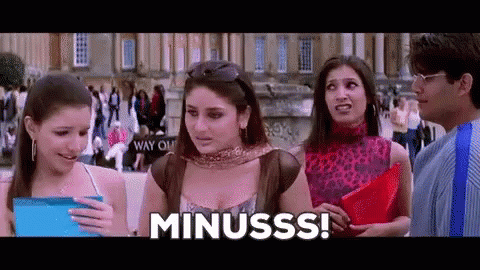






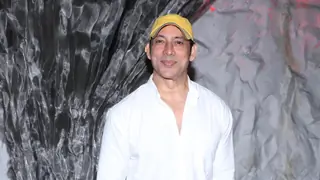


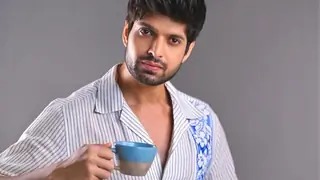
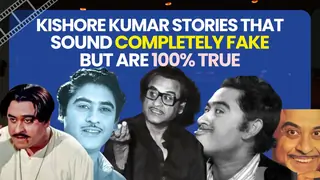
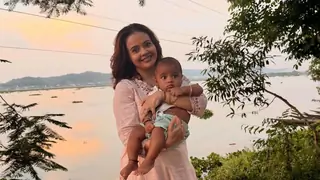




4